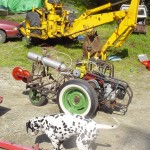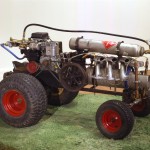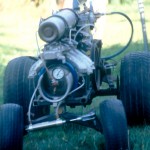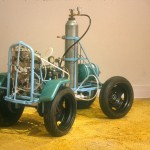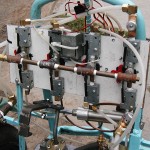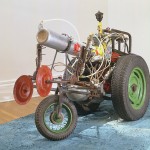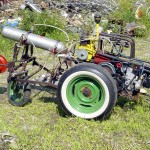2001 Remote Controlled Vehicles Powered by Landfill Gas
Parts found at junkyards, refined Methane rated at 2000PSI, Honda engine converted carburetor, steel, plumbing, remote control and various hardware parts.
Commissioned for the exhibition, ‘Fresh Kills: Artists Respond to the Closure of the Staten Island Landfill’, Snug Harbor Cultural Center, Newhouse Center for Contemporary Art, Staten Island, NY
Kahrl’s methane-powered vehicles were originally created for the landmark exhibition, ‘Fresh Kills: Artists Respond to the Closure of the Staten Island Landfill’, commemorating the closing of what was for decades the world’s largest landfill. As the height of operation, Freshkills landfill was said to have produced 2% of the world’s methane gas. Kahrl built the remote controlled vehicles from parts found in junkyards and powered them by methane or landfill gas.
Partial funding for vehicle construction was provided by Keyspan, recycled paper pulp provided by Visey Paper. Additional assistance provided by Maine Gas, engineering support by Paul Ruff, recycled parts from Rusty’s junk yard.
SAVE depicts 4 of Kahrl’s remote-controlled methane and solar-powered vehicles in motion at Rusty’s Junk Yard in Dresden Maine. Many of the car and tractor parts on the vehicles were scavenged at this location. Filming took place following the closure of his junkyard. Special thanks to Paul Ruff.
Video produced for ‘Living Green: Examining Sustainability, Institute of Contemporary Art, Maine College of Art, Portland
“My remote-controlled methane powered vehicles illustrate our complex relationship between energy and the land. The prototypes include old tractor parts, recalling a history of tending the land while the landfill gas, which fuels them, evokes an undesirable landscape born of discarded waste.”
Marguerite Kahrl
Press:
“What is more engaging than the environmentalist lesson is the mechanical and sculptural ingenuity of those little remote-controlled buggies”
Ken Johnson, New York Times, 2002

